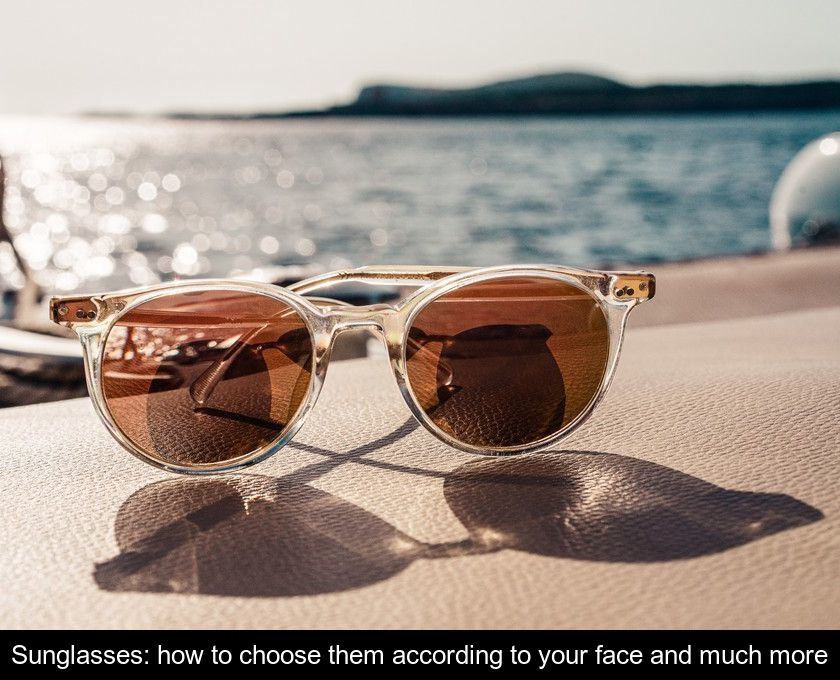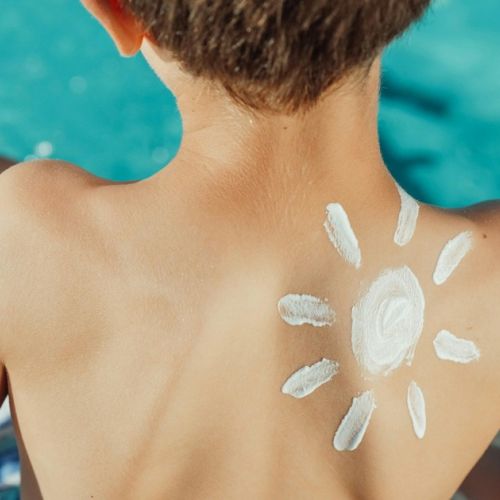Sunglasses: How To Choose Them According To Your Face And Much More
A must-have during the summer, sunglasses are not just a fashion accessory. Even if they can give you a star look, they must also protect your eyes from ultraviolet rays, pollen and wind. We explain how to choose your sunglasses according to your face and other more functional criteria.
A shape adapted to the face
For sunglasses to perform their protective function properly, the shape of the frame must be adapted to the face.
Logically, you shouldn't wear frames that are too small on a large face because the glasses may let the sun's rays through the sides or over the lenses.
To make sure your glasses fit you well, you should consider the shape of your forehead, cheekbones and jaw and ask yourself the following questions. Is your face more oval, round, square, triangle-shaped or inverted triangle? Is it longer than it is wide?
As a general rule, rounded frames are recommended for people with square faces and geometric or stretched shapes for people with round faces.
If you have an oval face, which is the most common morphology, you have the choice between different shapes of glasses so don't hesitate to try several models to find the one that best suits your personality!
If you have a long face, choose wide, square or rectangular sunglasses to widen your face.
Tips to know for better protection
In addition to the shape of the frame, which should be adapted to that of your face, you should know that other tricks can give you additional protection from the sun's UV rays:
- broad temples (headband shape) are more protective.
- an anti-reflective coating on the inside of the lenses provides interesting protection.
If you often go to the sea or ride a motorcycle, for example, think about polarizing lenses: the polarizing filter placed inside an organic lens cuts the reverberation.
Sportsmen often favor polarized lenses for water activities and curved lenses that hug the contours of the face. This shape ensures optimal protection and a perfect fit of the glasses while playing sports.
Protection above all for babies and children
If you need to choose sunglasses for a baby or child, know that your selection criteria must be even more stringent.
This accessory is essential to protect the fragile eyes of little ones because the lens is immature until the age of 12. Very dark category 4 lenses are therefore de rigueur for children.
On the material side, favor acetate frames that are molded and without nose pads (the little supports on the Bridge of the nose). This will prevent nose pad injuries in the event of a fall. For lenses, prefer polycarbonate which is the strongest material and filters 100% of UVA and UVB.
Also opt for a rounded, wraparound shape that will prevent the child from looking over the lens.
To note: children's sunglasses should generally be renewed every year because they often scratch their lenses and their faces change very quickly.
Quality and robustness also count
When it comes to choosing sunglasses, we often take into account aesthetic criteria and select the frame according to the shape of his face. But the quality and robustness of the model are also very important criteria.
First and foremost, you should check that the model has the CE mark inside a temple. This sign guarantees that the glasses comply with the European standard and that they protect you perfectly against UVA and UVB.
To avoid counterfeit glasses, avoid street vendors and go to a professional instead. Opticians check the manufacturer's warranty certificate.
The second criterion to consider is the index ranging from 0 to 4 often noted inside a branch. It corresponds to the level of protection against brightness according to the tint of the glass. Choose category 3: this is the darkest tint allowed for driving. It filters 85% of visible light and provides good eye protection by the sea and in the mountains.
For more robustness, choose acetate frames and organic lenses with a surface treatment to limit scratches.
If you can, don't hesitate to invest in a good quality model because it will be more durable. A high-end model can last up to 5 years, compared to 2 years for a low-cost or plastic model.











